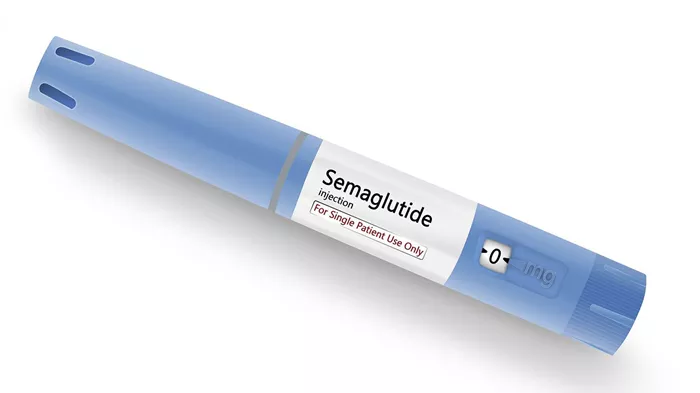Recent research has revealed that semaglutide, a glucagon-like peptide-1 receptor agonist (GLP-1RA), may significantly improve symptoms of hidradenitis suppurativa (HS) in patients struggling with obesity. This medication, primarily prescribed for type 2 diabetes, plays a critical role in enhancing insulin secretion, reducing glucagon levels, suppressing appetite, and promoting weight loss.
Semaglutide functions by stimulating the pancreas to release insulin in response to elevated blood sugar levels. It also slows gastric emptying, which contributes to reduced appetite and caloric intake. While the medication is commonly associated with diabetes management, it also offers potential benefits for individuals with obesity, lowering the risk of serious complications such as heart attack and stroke.
Hidradenitis suppurativa, often referred to as acne inversa, is characterized by painful lumps forming under the skin in areas prone to friction, such as the armpits and groin. This condition is closely linked with obesity and insulin resistance, complicating the treatment landscape. HS can progress over time, leading to significant scarring and impacting patients’ quality of life (QOL). Although medical and surgical treatments exist, the management of HS remains a challenge.
To explore the efficacy of semaglutide in HS patients, researchers conducted a mixed-effects analysis examining patient outcomes before and after initiating the treatment. The study, which took place between June 2020 and March 2023, involved 30 participants, predominantly women with an average age of 42. The patients were categorized according to the Hurley staging system, which classifies HS severity.
Hurley Stage I: Four patients presented with inflammatory nodules or abscesses without sinus tracts or scarring.
Hurley Stage II: Fifteen patients had recurrent abscesses, nodules, and sinus tracts with scarring.
Hurley Stage III: Eleven patients exhibited widespread involvement, with multiple interconnected sinus tracts, abscesses, and scarring.
All study participants were on concurrent HS treatments, with ten patients receiving multiple therapeutic approaches. Among the cohort, eight had a diagnosis of depression, two had diabetes, two suffered from inflammatory bowel disease, and two had polycystic ovarian syndrome. The average duration of semaglutide treatment was 8.2 months, with a mean weekly dosage of 0.8 mg.
The results demonstrated noteworthy changes in several health metrics following the administration of semaglutide:
Body Mass Index (BMI): The average BMI of patients decreased from 43.1 to 41.5 (95% CI, –2.041 to 10.4; P = .4818).
Weight Loss: Patients experienced a significant reduction in weight, dropping from an average of 259.48 lb to 246.04 lb (95% CI, 2.880-9.293; P < .0001).
Frequency of Flares: The mean frequency of HS flares improved from once every 8.5 weeks to once every 12 weeks.
Quality of Life Improvement: The Dermatology Life Quality Index (DLQI) scores decreased significantly, with the number of patients reporting a score of 13 or higher reducing from 13 to 9 (95% CI, 1.696-10.68; P = .0014). This indicates that 33.33% of patients achieved a clinically meaningful reduction of 4 points or more in their DLQI scores.
Moreover, improvements were noted in serological markers:
Hemoglobin A1C Levels: The average A1C level decreased from 39.3 to 36.6 (95% CI, 0.2234-9.696; P = .0335).
C-Reactive Protein: The mean level of C-reactive protein reduced from 7.8 to 6.9 (95% CI –2.142 to 5.110; P = .9503).
These findings represent the first comprehensive examination of semaglutide’s application in patients with hidradenitis suppurativa. The results suggest that semaglutide, in conjunction with standard HS therapies, can enhance patient quality of life and reduce the frequency of HS flare-ups.
It is noteworthy that the average dose of semaglutide utilized in this study (0.8 mg weekly) was lower than the licensed dosage for weight loss (2.4 mg weekly), due to availability constraints. This discrepancy indicates a potential area for future research, particularly in determining optimal dosing for HS patients.
The promising results of this study suggest that semaglutide could serve as a valuable addition to the treatment arsenal for patients suffering from hidradenitis suppurativa, particularly those with obesity. As ongoing research continues to explore the multifaceted benefits of GLP-1 receptor agonists, healthcare providers may soon have more effective tools at their disposal to manage this challenging condition. The potential for semaglutide to improve not only metabolic parameters but also the quality of life for HS patients opens up new avenues for treatment and underscores the importance of a multidisciplinary approach in managing obesity-related health issues.
Related Topics:


